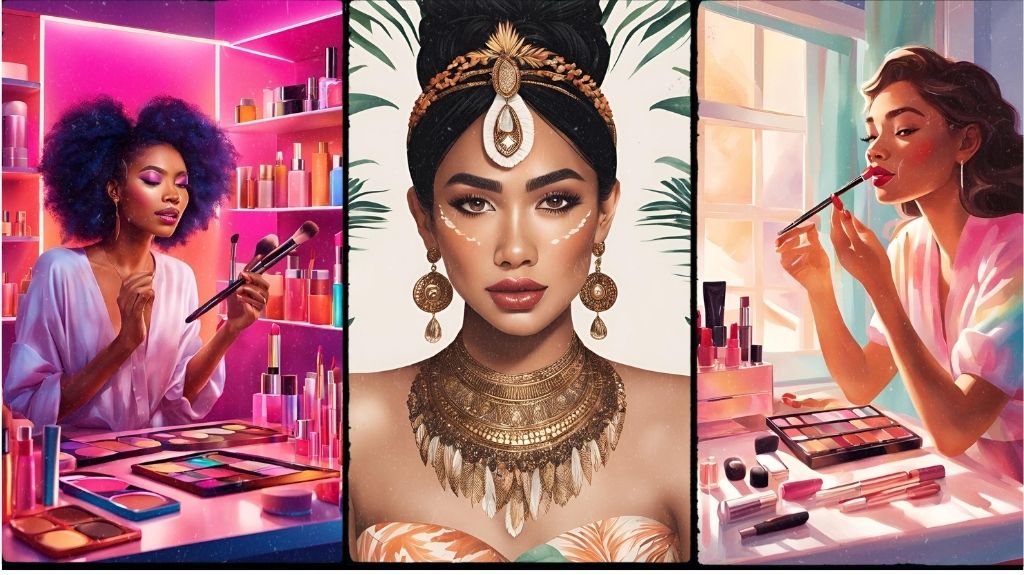Finding the perfect concealer can transform your makeup routine, whether you’re covering blemishes, brightening dark circles, or creating a flawless base.
But with so many options available, it can be hard to know where to start. In this guide, I’ll break down everything you need to know to choose the right concealer for your skin tone, undertone, and specific needs.
Table of Contents
Understanding Your Undertone
Before you start shopping for concealer, it’s important to identify your skin’s undertone. Your undertone is the subtle hue that lies beneath the surface of your skin and helps determine which colors will complement your complexion. Here’s a simple way to figure out your undertone:
Vein Test Method
- Green veins indicate warm undertones.
- Blue or purple veins suggest cool undertones.
- A mix of both indicates neutral undertones.
Once you identify your undertone, you’ll be able to choose a concealer that complements your skin, ensuring a more natural and seamless finish.
Shade Selection Guidelines
General Rules
When choosing a concealer, consider the areas of your face you’re applying it to. Different areas may require different shades and types of coverage.
- For dark circles: Opt for a concealer that’s 1-2 shades lighter than your skin tone. This will brighten the under-eye area and counteract the darkness.
- For blemishes: Match the concealer to your exact skin tone to camouflage imperfections seamlessly.
- Keep two concealer shades in your collection: One for brightening (for under-eye areas) and one for covering blemishes and redness. This will give you versatility for different needs.
By Skin Tone Type
Choosing the right shade is also about understanding your skin tone. Here’s a quick breakdown of what works best for different complexions:
- Dusky Skin: Rich, warm undertones work best. Look for concealers that have a golden, amber, or orange base.
- Medium Skin: Balanced warm and cool undertones are ideal. Go for concealers that have a neutral to golden base for a seamless match.
- Wheatish Skin: Olive or neutral undertones are your best bet. A concealer with a slight green or yellow undertone will blend in naturally.
Color Correction Theory
Sometimes, a concealer in a neutral tone isn’t enough to address specific concerns like redness or dark circles. This is where color correction comes in. Understanding the color wheel can help you neutralize certain skin issues.
For Specific Concerns
- Bluish/Purple Dark Circles: These are best corrected with a peach or salmon-toned concealer. The warm undertones in these colors balance out the cool tones of your dark circles.
- Visible Veins: To counteract the blue or green hue of veins, use concealers with yellow or peach undertones. These shades neutralize the blue tones, creating an even skin tone.
Application Tips
Applying concealer properly makes all the difference in achieving a flawless look. Here are a few techniques to ensure you get the best results:
Testing Method
- Swatch on your lower cheek: The skin on your face can differ in tone from your under-eye area. Swatching on the lower cheek gives you a better match for your overall skin tone.
- Test multiple shades side by side: This will help you see which shade works best for your skin and your desired coverage.
- Allow the concealer to dry down: Concealers can change color as they dry. Always wait a few minutes to see how the product settles before deciding if it’s a perfect match.
- Check the color in natural lighting: Natural light reveals how the concealer truly looks on your skin, ensuring there are no harsh lines or mismatches.
Best Practices
For the most flawless and long-lasting results, follow these best practices when using concealer:
For Optimal Results
- Apply foundation first, then concealer: Foundation can help even out your skin tone, so you may need less concealer afterward.
- Use different shades for different purposes: Keep a concealer shade for brightening under the eyes and another one for blemishes or redness.
- Consider your skin type when choosing a formula: Dry skin might benefit from a creamy concealer, while oily skin may require a matte formula to control shine.
- Test the concealer’s staying power: Some concealers can crease or fade throughout the day, so it’s important to find one that stays put for hours.
FAQs
1. How do I know if I need a yellow or peach concealer for my dark circles?
If your dark circles are more blue or purple, a peach or salmon-toned concealer will neutralize the color and brighten the under-eye area. If your circles lean red or brown, a yellow concealer works better to balance out the color.
2. Can I use a lighter concealer under my eyes even if I have warm undertones?
Yes! Even if you have warm undertones, a concealer that is 1-2 shades lighter than your skin tone will brighten the under-eye area. Just make sure the concealer still complements your warm undertones, so it doesn’t look ashy.
3. What’s the best concealer for dry skin?
For dry skin, opt for a creamy, hydrating concealer like Tarte Shape Tape Ultra Creamy Concealer or NARS Radiant Creamy Concealer. These formulas won’t emphasize dryness or fine lines.
4. How do I apply concealer to cover blemishes without it looking cakey?
To avoid a cakey finish, use a small amount of concealer and apply it with a fingertip or brush, pressing it gently into the skin. Layer the product if needed, but don’t apply too much at once. Always blend well.
5. Should I use a color-correcting concealer before or after my regular concealer?
Apply color-correcting concealers first. Use them to neutralize the discoloration, and then layer your regular concealer on top to match your skin tone and blend everything seamlessly.
With the right concealer, you can tackle any skin concern with ease whether it’s brightening your under-eye area, covering blemishes, or achieving a smooth, even complexion.
Remember, it’s all about understanding your undertone, choosing the right shades, and applying strategically for the best results.


